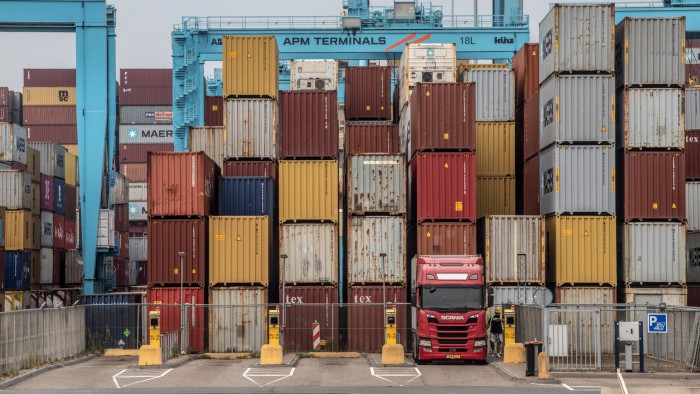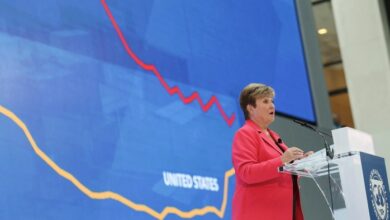EU eyes closer ties to transpacific bloc as Trump jolts trade order

Donald Trump’s return to the White House is reviving a stalled plan to forge a strategic partnership between the EU and a key Indo-Pacific trade bloc, according to EU officials and senior diplomats.
Plans to build stronger links between Brussels and the Comprehensive and Progressive Agreement for Trans-Pacific Partnership — a group of 12 countries that includes Canada, Japan and Mexico — have gained momentum following Trump’s “liberation day” tariffs announcement in April.
A European Commission official said that while it is “still very early days”, the two sides have “moved into a space where we’re willing to look at some sort of structured co-operation with [the] CPTPP”.
European Commission president Ursula von der Leyen told the FT in April that the two sides wanted to co-operate on “rules about how fair trade around the world is functioning to the better of mankind”.
Both blocs wanted to use the current turmoil to look into what had to be improved at the World Trade Organization “and how can we work closer together to make this happen”, von der Leyen said.

The renewed openness in Brussels to a partnership, which could potentially include closer ties on both digital and goods trade, marks a step-change in attitude at the highest levels of the EU.
The idea would throw an umbrella over national economies accounting for roughly 30 per cent of global GDP, and would send a signal that the majority of the global trading system is committed to preserving the rules-based order now threatened by Trump tariffs, officials on both sides said.
A previous attempt to deepen ties in 2023 did not gain diplomatic traction, but a report at the time by Sweden’s National board of Trade, an independent government agency, argued that a deal between the blocs could make them “the centre of gravity in world trade”.
The CPTPP was founded in 2018 and includes Australia, Brunei, Canada, Chile, Japan, Malaysia, Mexico, New Zealand, Peru, Singapore, the UK and Vietnam. It offers equal treatment for investors and more deeply integrated goods trade. The EU already has bilateral deals with nine CPTPP members.
Among CPTPP countries, the most vocal backing for closer EU ties has come from New Zealand, Canada and Singapore, but diplomats said that Japan was also quietly supportive.

Canada’s foreign ministry said the country was committed to strengthening its trade relations with Europe and the Indo-Pacific region, although a spokesperson insisted “no decisions or agreements have been made”.
The prime ministers of both New Zealand and Singapore have also endorsed the idea of deeper co-operation between the two blocs in recent weeks.
A mechanism for converting such warm sentiments into a formal dialogue process has yet to be established, diplomats said, partly because Australia currently holds the rotating presidency of the CPTPP and held a general election this weekend.
The formation of a new Australian government is expected to lead to a resumption of stalled EU-Australia bilateral trade deal talks, which could also provide a political forum to open a wider EU-CPTPP dialogue, EU diplomats said.
Another CPTPP diplomat said that the mechanisms for improved EU co-operation could be raised at a meeting of trade ministers at the Asia-Pacific Economic Cooperation (APEC) meeting in South Korea this month.
Supporters of a rapid deal include Cecilia Malmström, a former EU trade commissioner now at the Peterson Institute for International Economics, who said there was clearly “renewed momentum” behind the idea.
“If this happens, it needs to happen rather quickly — this year,” she added. “The EU is a slow-moving animal, but just look at the last three months, there is a real urgency around really trying to defend rules-based trade,” she told the FT.
The parameters of any arrangement are also still to be agreed. Von der Leyen said there were no plans for the EU to join the CPTPP.
One CPTPP official said a possible framework could involve a “twin track” process comprising a “new code of conduct” in which ministers jointly affirmed their commitment to WTO rules, alongside a separate dialogue to discuss harmonising rules in key areas such as digital trade and sustainability.
At the same time, in an effort not to be presented as an anti-US bloc and in acknowledgment that some of Washington’s trade grievances were justified, an agreement could also look to engage with reforms to the WTO.
The most ambitious proposals for a deal between the two blocs have also raised the possibility of the two sides agreeing to “cumulation” of the so-called rules of origin, which are used in Free Trade Agreements to determine whether a product has sufficient local content to qualify for preferential lower-tariff access to a market.
Supporters of this idea say it would enable EU and CPTPP companies to more easily integrate their supply chains, and allow them to more easily import goods into each others’ countries.
The idea was floated by the Board of Trade in Sweden and again in a recent report by the Brussels-based Bruegel think-tank, but Commission officials were clear that this was not currently an option for the EU.
Additional reporting Nic Fildes in Sydney and Leo Lewis in Tokyo
https://www.ft.com/__origami/service/image/v2/images/raw/https%3A%2F%2Fd1e00ek4ebabms.cloudfront.net%2Fproduction%2Fa4f0bc04-5e53-45c7-9ddf-ccf12ddb439e.jpg?source=next-article&fit=scale-down&quality=highest&width=700&dpr=1
2025-05-04 04:00:25





